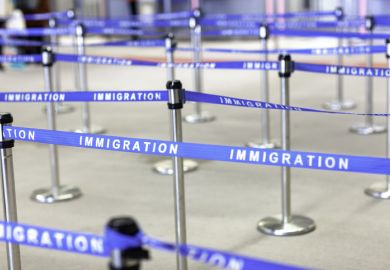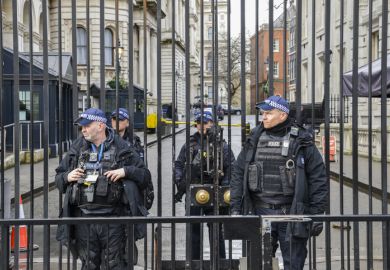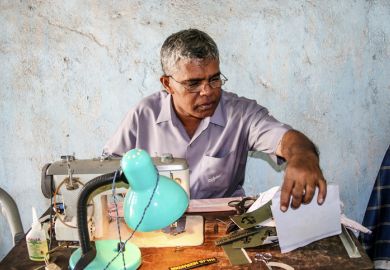Flagging demand from China has prompted Australian universities to escalate recruitment from the Indian subcontinent, where the potential for visa fraud has been fuelled by a rule change allowing international students to work as many hours as they like.
Times Higher Education understands that prestigious Australian universities have been warned by the Department of Home Affairs (DHA) after enrolling large numbers of unsuitable Indian students.
One sector source said student interest from China had “fallen off a cliff” in early December. Hopes that applications would rebound following the February Winter Olympics, with Chinese authorities more relaxed about travel to coronavirus-hit areas, have been dashed. Consequently, most universities have “massively” boosted recruitment from the subcontinent – including institutions with little experience of the region.
“Everyone’s in India,” he said. “That’s where all the growth is at the moment. But anyone who’s been in India for a while knows you get burned. If you’re newer to that market, some of it comes as a shock.”
The source reported tuition fee discounting of types “never seen before”, with many institutions now offering “scholarships” to students from China. “Historically, you never discount to China, because you don’t have to, but the middle-tier universities are now discounting to China. And with markets other than China, everyone’s discounting.”
This, along with sweeteners such as Australia’s refunding of visa fees, has helped lure would-be students away from Canada and Britain. The number of higher education visa holders in Australia rose last December – the first such increase since February 2020 – with the stock of unprocessed applications for these visas doubling between September and December.
The surge included many Indians, who represented easily the biggest group of student visa holders in Australia by December, outnumbering the Chinese – the next biggest group – by three to two. Indian students also comprise close to half the foreigners applying for graduate or post-study work visas.
But as Indian interest in Australian university study has rebounded, the proportion of successful visa applications lodged from India has declined. While around 87 per cent of decisions favoured students in the latter half of last year, that figure plunged to 73 per cent in March.
The University of Technology Sydney (UTS) said it was one of many Australian universities that had increased its activity in the subcontinent. Deputy vice-chancellor Iain Watt said UTS was moving carefully. “We’re only making offers to students who have gone through a very strict genuine student test, which we apply to every student from that part of the world,” he said.
Mr Watt said the less “rigorous” approach of some institutions risked a DHA clampdown, with fewer visas granted to students from the subcontinent.
He said demand from Chinese students for UTS courses was “strong”, albeit still below pre-pandemic levels. But sources say Chinese figures are inflated by students who enrol but then defer their courses.
Chinese student flows are being constrained by a mix of factors including scarce flights, Beijing’s border controls and concerns about contracting Covid overseas.
Migration expert Abul Rizvi said Canberra’s suspension of limits on foreign students’ working hours could encourage visa fraud in India.
“Students would be very aware of the work rights situation, and that would be a significant drawcard – which generally means you’re drawing on students who may not be as committed to study as work,” he said.
The DHA would not confirm or deny reports that it had warned Australian universities to select Indian students more carefully. But a spokeswoman said the department worked closely with the higher education sector “to ensure providers seek to attract genuine students”.
Register to continue
Why register?
- Registration is free and only takes a moment
- Once registered, you can read 3 articles a month
- Sign up for our newsletter
Subscribe
Or subscribe for unlimited access to:
- Unlimited access to news, views, insights & reviews
- Digital editions
- Digital access to THE’s university and college rankings analysis
Already registered or a current subscriber? Login








